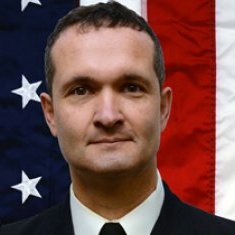03 Oct Battlefield Deaths Decline Since Faster Care Mandated
 MedicalResearch.com Interview with:
MedicalResearch.com Interview with:
Russ S. Kotwal, M.D., M.P.H.
United States Army Institute of Surgical Research
Joint Base San Antonio-Ft. Sam Houston
Medical Research: What is the background for this study?
Dr. Kotwal: The term golden hour was coined to encourage urgency of trauma care. In 2009, Secretary of Defense Robert M. Gates mandated prehospital helicopter transport of critically injured combat casualties in 60 minutes or less. The objectives of the study were to compare morbidity and mortality outcomes for casualties before vs after the mandate and for those who underwent prehospital helicopter transport in 60 minutes or less vs more than 60 minutes. A retrospective descriptive analysis of battlefield data examined 21,089 US military casualties that occurred during the Afghanistan conflict from September 11, 2001, to March 31, 2014.
Medical Research: What are the main findings?
Dr. Kotwal: For the total casualty population, the percentage killed in action and the case fatality rate (CFR) were higher before vs after the mandate, while the percentage died of wounds remained unchanged. Decline in CFR after the mandate was associated with an increasing percentage of casualties transported in 60 minutes or less, with projected vs actual CFR equating to 359 lives saved. Among 4542 casualties with detailed data, there was a decrease in median transport time after the mandate and an increase in missions achieving prehospital helicopter transport in 60 minutes or less. When adjusted for injury severity score and time period, the percentage killed in action was lower for those critically injured who received a blood transfusion and were transported in 60 minutes or less, while the percentage died of wounds was lower among those critically injured initially treated by combat support hospitals. Acute morbidity was higher among those critically injured who were transported in 60 minutes or less, those severely and critically injured initially treated at combat support hospitals, and casualties who received a blood transfusion, emphasizing the need for timely advanced treatment.
Medical Research: What should clinicians and patients take away from your report?
Dr. Kotwal: Casualty risk mitigation must consider the balance between speed and availability of treatment capability—rapid casualty transport to treatment, delivering treatment to the casualty, or both, as permitted by the environment and enemy threat.
A mandate made in 2009 by Secretary of Defense Gates reduced the time between combat injury and receiving definitive care. Prehospital transport time and treatment capability are important factors for casualty survival on the battlefield.
Medical Research: What recommendations do you have for future research as a result of this study?
Dr. Kotwal: Future detailed study is needed for comprehensive comparison of the capabilities and outcome differences between types of military medical treatment facilities. Although inherently challenging, future efforts must continue to emphasize capture and analysis of prehospital battlefield data for performance improvement. Future analysis should consider the actual tactical combat conditions of war to account for influences of weather, illumination, altitude, terrain, protective equipment, mass casualty scenarios, and enemy actions on prehospital efforts. Future efforts should also include continuous review and translation of best practices between nations and the civilian and military sectors.
Citation:
Russ S. Kotwal, Jeffrey T. Howard, Jean A. Orman, Bruce W. Tarpey, Jeffrey A. Bailey, Howard R. Champion, Robert L. Mabry, John B. Holcomb, Kirby R. Gross. The Effect of a Golden Hour Policy on the Morbidity and Mortality of Combat Casualties. JAMA Surgery, 2015; 1 DOI: 10.1001/jamasurg.2015.3104
[wysija_form id=”5″]
MedicalResearch.com is not a forum for the exchange of personal medical information, advice or the promotion of self-destructive behavior (e.g., eating disorders, suicide). While you may freely discuss your troubles, you should not look to the Website for information or advice on such topics. Instead, we recommend that you talk in person with a trusted medical professional.
The information on MedicalResearch.com is provided for educational purposes only, and is in no way intended to diagnose, cure, or treat any medical or other condition. Always seek the advice of your physician or other qualified health and ask your doctor any questions you may have regarding a medical condition. In addition to all other limitations and disclaimers in this agreement, service provider and its third party providers disclaim any liability or loss in connection with the content provided on this website.
Russ S. Kotwal, M.D., M.P.H. (2015). Battlefield Deaths Decline Since Faster Care Became Mandated
Last Updated on October 3, 2015 by Marie Benz MD FAAD
